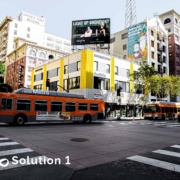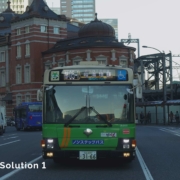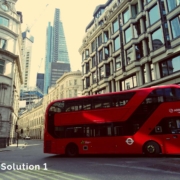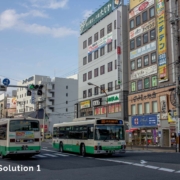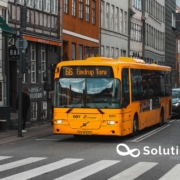The effects of ambient temperature change on the efficiency and range of the electric bus in cold climatic zones.
- Stardust project from EU came into force.
Several cities across the world have sustainable mobility plans to reduce carbon dioxide emissions, pollution, and traffic jams. Such as the city of Tampere in Finland aims to be carbon-neutral in 2030 and wants to find out how the electrification of public transport would help achieve the climate goal. In Finland, the temperature can vary from +35 °C to -35 °C. That’s a big challenge for an electric bus.
Currently, the traffic is accountable for about a quarter of the city of Tampere’s carbon dioxide emissions. Public transportation, especially in the form of green solutions, such as electrification can have an enormous effect on reducing carbon dioxide emissions.
“Research shows that electric buses produce up to 75% fewer emissions than conventional diesel buses. However, fewer emissions are determined by the grid emissions of the used electricity. Electric city buses are still a fairly new phenomenon in city transport.”
In 2019, an amendment to the Clean Vehicles Directive came into force. The amendment obliges the public sector to procure zero-emission vehicles. The city of Tampere is one of the lighthouse cities of the EU-funded Stardust project where new solutions for reducing emissions are piloted.
In Tampere, the focus is on reducing emissions from public transport and supporting light transport. The 2017 climate strategy of the Finnish Government necessitates a 50% reduction, compared to the year 2005, in transport greenhouse gas emissions by 2030. Thus, the cities in Finland are encouraged to electrify public transportation.
- The effect of cold weather zone on electric bus operation.
Nysse is the Tampere regional public transport organization in Finland. It had around 41,300,000 passengers in 2019. In 2020, the number of passengers was lower due to the epidemic, which made people remote work. Nysse serves an area that includes eight municipalities where approximately 390,000 inhabitants live. About 60% of bus services are outsourced to three major private operators, and in-house operator drives around 40% of bus services.
Nysse has 280 buses in operation. The climate in Tampere is cold and temperate and can vary between +32°C and 32°C. The lowest average temperature is 8.2°C in February, and the average temperature is 16°C in July, the average annual temperature is 3.7°C. Electric buses were introduced at the end of 2016 in Tampere city. The electric buses in Tampere city use lithium-titanate batteries of 325 kWh that last at least 10 years and the maximum speed of the buses are over 70 km/h, and the average consumption is 100–150 kWh each 100 km.
Since 2017, electric buses have been operating in the city of Tampere’s bus route 2, which starts from Pyynikintori market and ends at Rauhaniemi. The round-trip length is around 8.8 km. The electric buses are fast-charged at the market and slow-charged at the depot, and the electric buses spend the night inside a warm depot.
They have a system was developed to collect data on electric buses. A monitor was placed in one bus for sensing energy efficiency. Later on, measuring equipment was installed on other electric buses. The data has been collected for more than a few years, including a couple of cold winter seasons.




